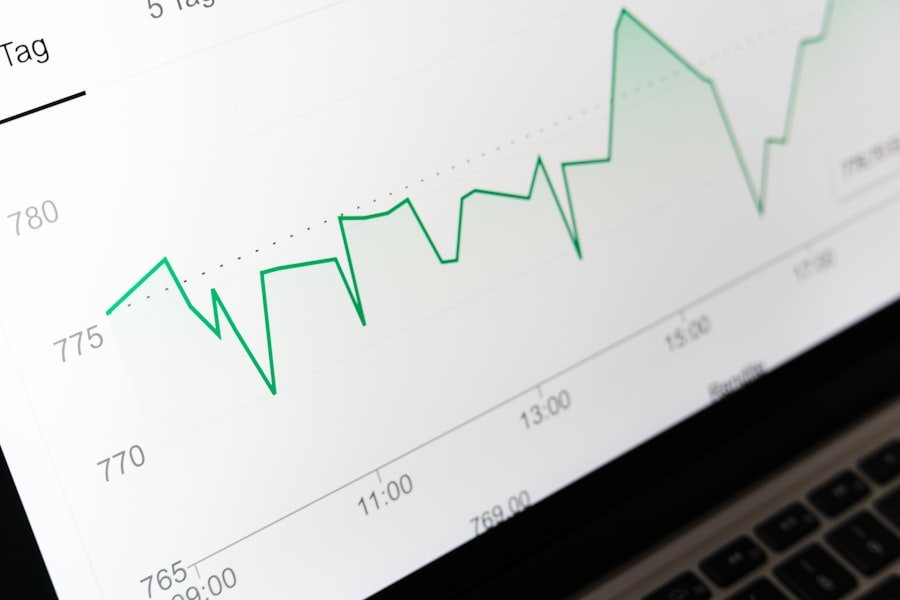In recent years, the significance of whistleblower protection has gained considerable attention, particularly in the context of corporate governance and ethical conduct. Whistleblowers play a crucial role in exposing wrongdoing, fraud, and unethical practices within organisations. However, the act of whistleblowing often comes with substantial risks, including retaliation from employers and colleagues.
To mitigate these risks and encourage individuals to come forward with information, robust whistleblower protection mechanisms are essential. This is where whistleblower protection analytics comes into play, providing a framework for understanding and enhancing the effectiveness of these protective measures. Whistleblower protection analytics involves the systematic collection and analysis of data related to whistleblowing incidents and the effectiveness of protective policies.
By leveraging data-driven insights, organisations can identify trends, assess the impact of their whistleblower protection programmes, and ultimately create a safer environment for individuals who choose to report misconduct. This analytical approach not only aids in compliance with legal requirements but also fosters a culture of transparency and accountability within organisations. As the landscape of corporate ethics continues to evolve, the integration of analytics into whistleblower protection strategies is becoming increasingly vital.
Summary
- Whistleblower protection analytics is a crucial tool for organisations to detect and prevent misconduct and unethical behaviour within the workplace.
- Understanding the importance of whistleblower protection is essential for creating a culture of transparency and accountability within an organisation.
- Analytics plays a key role in identifying patterns and trends in whistleblower reports, allowing for proactive measures to be taken to address potential issues.
- Whistleblower protection analytics works by collecting and analysing data from various sources to identify potential misconduct and unethical behaviour within an organisation.
- Implementing whistleblower protection analytics can lead to improved compliance, reduced risk of financial loss, and enhanced organisational reputation.
Understanding the Importance of Whistleblower Protection
The importance of whistleblower protection cannot be overstated, as it serves as a cornerstone for ethical behaviour within organisations. Whistleblowers often risk their careers, reputations, and even personal safety to bring attention to issues that may otherwise remain hidden. Effective protection mechanisms are essential to ensure that these individuals feel secure in their decision to report misconduct.
Without such protections, potential whistleblowers may choose to remain silent, allowing unethical practices to persist unchecked. Moreover, the implications of failing to protect whistleblowers extend beyond individual cases; they can have far-reaching consequences for organisations and society as a whole. When misconduct goes unreported, it can lead to financial losses, legal repercussions, and damage to an organisation’s reputation.
In contrast, when whistleblowers are supported and protected, organisations can address issues proactively, fostering a culture of integrity and trust. This not only enhances employee morale but also strengthens stakeholder confidence in the organisation’s commitment to ethical practices.
The Role of Analytics in Whistleblower Protection

Analytics plays a pivotal role in enhancing whistleblower protection by providing organisations with the tools necessary to evaluate their existing policies and practices. Through data analysis, organisations can gain insights into the frequency and nature of whistleblowing incidents, as well as the effectiveness of their response mechanisms. This information is invaluable for identifying areas that require improvement and for developing targeted strategies to bolster protections for whistleblowers.
Furthermore, analytics can help organisations understand the demographics of whistleblowers, including factors such as job roles, departments, and tenure within the company. By analysing this data, organisations can tailor their training and communication efforts to address specific concerns and barriers that may prevent individuals from coming forward. For instance, if data reveals that employees in certain departments are less likely to report misconduct, targeted outreach initiatives can be implemented to encourage reporting in those areas.
This proactive approach not only enhances the effectiveness of whistleblower protection programmes but also contributes to a more inclusive organisational culture.
How Whistleblower Protection Analytics Works
Whistleblower protection analytics typically involves several key components that work together to create a comprehensive understanding of whistleblowing dynamics within an organisation. The first step is data collection, which may include information from various sources such as internal reporting systems, employee surveys, and external regulatory reports. This data is then aggregated and analysed using statistical methods to identify patterns and trends related to whistleblowing incidents.
Once the data has been analysed, organisations can generate reports that highlight key findings and recommendations for improvement. For example, if analysis reveals a high incidence of retaliation against whistleblowers in specific departments, organisations can take immediate action to address these issues through enhanced training or policy revisions. Additionally, predictive analytics can be employed to forecast potential future incidents based on historical data, allowing organisations to implement preventative measures before issues escalate.
The integration of technology also plays a significant role in whistleblower protection analytics. Advanced software solutions can facilitate real-time monitoring of reporting channels and provide insights into employee sentiment regarding whistleblowing policies. By harnessing artificial intelligence and machine learning algorithms, organisations can enhance their ability to detect anomalies or patterns that may indicate underlying issues requiring attention.
Benefits of Implementing Whistleblower Protection Analytics
Implementing whistleblower protection analytics offers numerous benefits for organisations committed to fostering an ethical workplace culture. One of the primary advantages is the ability to make data-driven decisions that enhance the effectiveness of whistleblower protection programmes. By understanding the specific challenges faced by potential whistleblowers, organisations can tailor their policies and training initiatives to address these concerns directly.
Additionally, analytics can help organisations measure the impact of their whistleblower protection efforts over time. By tracking key performance indicators such as the number of reports filed, the outcomes of investigations, and employee perceptions of safety when reporting misconduct, organisations can assess whether their initiatives are yielding positive results. This continuous feedback loop allows for ongoing refinement of policies and practices, ensuring that they remain relevant and effective in addressing emerging challenges.
Moreover, the implementation of analytics can lead to increased trust among employees. When individuals see that their organisation is actively monitoring and improving its whistleblower protection mechanisms based on data insights, they are more likely to feel confident in coming forward with information about wrongdoing. This trust is essential for creating an environment where ethical behaviour is prioritised and where employees feel empowered to speak up without fear of retaliation.
Challenges and Limitations of Whistleblower Protection Analytics

Despite its many advantages, the implementation of whistleblower protection analytics is not without challenges and limitations. One significant hurdle is the potential for data privacy concerns. Collecting and analysing sensitive information about employees can raise ethical questions regarding confidentiality and consent.
Organisations must navigate these complexities carefully to ensure that they are not infringing on employees’ rights while still gathering necessary data for analysis. Another challenge lies in the interpretation of data. While analytics can provide valuable insights, misinterpretation or overreliance on quantitative metrics can lead to misguided conclusions.
For instance, a decrease in reported incidents may be misread as an improvement in workplace culture when it could simply indicate that employees feel less safe reporting misconduct due to fear of retaliation. Therefore, it is crucial for organisations to complement quantitative analysis with qualitative assessments that consider employee sentiment and organisational context. Additionally, there may be limitations in the availability and quality of data collected.
In some cases, organisations may lack comprehensive reporting systems or may not have established protocols for capturing relevant information about whistleblowing incidents. This lack of data can hinder effective analysis and limit the ability to draw meaningful conclusions about the state of whistleblower protection within the organisation.
Best Practices for Utilising Whistleblower Protection Analytics
To maximise the effectiveness of whistleblower protection analytics, organisations should adopt several best practices that promote ethical reporting and enhance data-driven decision-making. First and foremost, establishing clear reporting channels is essential. Employees must have access to multiple avenues for reporting misconduct—whether through anonymous hotlines, online platforms, or designated personnel—ensuring that they feel safe when coming forward.
Training programmes should also be implemented regularly to educate employees about their rights as whistleblowers and the protections available to them. These initiatives should emphasise the importance of reporting unethical behaviour while reassuring employees that their identities will be safeguarded throughout the process. By fostering a culture of openness and support around whistleblowing, organisations can encourage more individuals to report concerns without fear.
Furthermore, organisations should prioritise transparency in their analytics processes. Sharing insights derived from data analysis with employees can help build trust and demonstrate a commitment to addressing issues raised by whistleblowers. Regularly communicating updates on policy changes or improvements made as a result of analytics can reinforce employees’ confidence in the organisation’s dedication to ethical practices.
Lastly, it is vital for organisations to engage in continuous evaluation and improvement of their whistleblower protection programmes based on analytical findings. This iterative approach allows organisations to adapt their strategies in response to changing circumstances or emerging trends within their workforce.
Conclusion and Future Outlook for Whistleblower Protection Analytics
As we look towards the future, it is evident that whistleblower protection analytics will play an increasingly critical role in shaping organisational cultures centred around ethics and accountability. The growing recognition of the importance of protecting whistleblowers will drive demand for more sophisticated analytical tools that enable organisations to monitor their practices effectively. Moreover, advancements in technology will likely enhance the capabilities of whistleblower protection analytics.
The integration of artificial intelligence and machine learning will enable organisations to analyse vast amounts of data more efficiently while identifying patterns that may not be immediately apparent through traditional methods. This evolution will empower organisations to respond proactively to potential issues before they escalate into significant problems. In conclusion, as organisations continue to navigate complex ethical landscapes, embracing whistleblower protection analytics will be essential for fostering environments where individuals feel empowered to speak up against wrongdoing.
By leveraging data-driven insights and implementing best practices tailored to their unique contexts, organisations can create safer workplaces that prioritise integrity and transparency while safeguarding those who bravely come forward with critical information.
Whistleblower Protection Analytics is crucial for ensuring transparency and accountability within organisations. A related article that highlights the importance of corporate governance and ethics is the case study on Samsung. This case study explores how Samsung has implemented measures to uphold ethical standards and maintain a positive corporate reputation. By prioritising whistleblower protection, companies like Samsung can foster a culture of integrity and trust among employees and stakeholders. To learn more about Samsung’s approach to corporate governance, visit this link.
FAQs
What is whistleblower protection analytics?
Whistleblower protection analytics refers to the use of data analysis and technology to identify and mitigate potential risks to whistleblowers within an organization. This can include monitoring and analyzing patterns of retaliation, identifying areas of vulnerability, and implementing strategies to protect whistleblowers from harm.
Why is whistleblower protection analytics important?
Whistleblower protection analytics is important because it helps organizations to identify and address potential risks to whistleblowers, ensuring that they can come forward with concerns without fear of retaliation. By using data analysis and technology, organizations can proactively protect whistleblowers and create a culture of transparency and accountability.
How does whistleblower protection analytics work?
Whistleblower protection analytics works by collecting and analyzing data related to whistleblower reports, retaliation incidents, and other relevant information within an organization. This data is then used to identify patterns, trends, and areas of vulnerability, allowing organizations to take proactive measures to protect whistleblowers and prevent retaliation.
What are the benefits of using whistleblower protection analytics?
The benefits of using whistleblower protection analytics include the ability to proactively identify and address potential risks to whistleblowers, create a safer environment for reporting concerns, and demonstrate a commitment to ethical and transparent business practices. Additionally, whistleblower protection analytics can help organizations to comply with legal and regulatory requirements related to whistleblower protection.
What are some examples of whistleblower protection analytics tools?
Examples of whistleblower protection analytics tools include software platforms that collect and analyze data related to whistleblower reports, employee feedback, and retaliation incidents. These tools may use machine learning algorithms, natural language processing, and other advanced technologies to identify patterns and trends that can help protect whistleblowers.
 CMC A3 ePoster Edition 14 "Enterprise in the fast lane"
CMC A3 ePoster Edition 14 "Enterprise in the fast lane"  Enterprise Rent-A-Car A3 ePoster Edition 12 "Customer satisfaction"
Enterprise Rent-A-Car A3 ePoster Edition 12 "Customer satisfaction"  Intellectual Property Office A3 ePoster Edition 14 "Protecting the marketing mix through intellectual property rights"
Intellectual Property Office A3 ePoster Edition 14 "Protecting the marketing mix through intellectual property rights"  TNT A3 ePoster Edition 16 "Delivering a business strategy"
TNT A3 ePoster Edition 16 "Delivering a business strategy" 